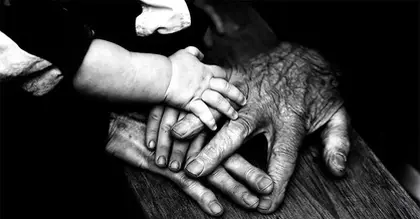Summary
Commonly reported side effects of ruxolitinib include: anemia, balance impairment, dizziness, headache, labyrinthitis, meniere's disease, neutropenia, thrombocytopenia, vertigo, and orthostatic dizziness. Other side effects include: weight gain, and flatulence. Continue reading for a comprehensive list of adverse effects.
Applies to ruxolitinib: oral tablet.
Serious side effects of Ruxolitinib
Along with its needed effects, ruxolitinib may cause some unwanted effects. Although not all of these side effects may occur, if they do occur they may need medical attention.
Check with your doctor immediately if any of the following side effects occur while taking ruxolitinib:
More common
- Black, tarry stools
- bladder pain
- bleeding gums
- blood in the urine or stools
- blurred vision
- bruising
- chest tightness
- chills
- cloudy urine
- collection of blood under the skin
- cough
- coughing up blood
- deep, dark purple bruise
- difficult, burning, or painful urination
- difficulty in breathing or swallowing
- dizziness
- fever
- frequent urge to urinate
- headache
- hoarseness
- increased menstrual flow or vaginal bleeding
- itching, pain, redness, or swelling
- large, flat, blue or purplish patches in the skin
- lower back or side pain
- nervousness
- nosebleeds
- painful or difficult urination
- pale skin
- paralysis
- pinpoint red spots on the skin
- pounding in the ears
- prolonged bleeding from cuts
- pus in the urine
- red or dark brown urine
- small, red or purple spots on the skin
- slow or fast heartbeat
- sore throat
- swelling
- tenderness, pain, swelling, warmth, skin discoloration, and prominent superficial veins over the affected area
- trouble breathing
- ulcers, sores, or white spots in the mouth
- unusual bleeding or bruising
- unusual tiredness or weakness
Less common
- Painful blisters on the trunk of the body
Incidence not known
- Anxiety
- burning or stinging of the skin
- chest pain
- fainting
- pain, redness, or swelling in the arm or leg
- painful cold sores or blisters on the lips, nose, eyes, or genitals
- pains in the chest, groin, or legs, especially calves of the legs
- persistent non-healing sore
- pink growth
- reddish patch or irritated area
- severe headaches of sudden onset
- sudden loss of coordination
- sudden onset of slurred speech
- sudden vision changes
- shiny bump
- white, yellow, or waxy scar-like area
Other side effects of Ruxolitinib
Some side effects of ruxolitinib may occur that usually do not need medical attention. These side effects may go away during treatment as your body adjusts to the medicine. Also, your health care professional may be able to tell you about ways to prevent or reduce some of these side effects.
Check with your health care professional if any of the following side effects continue or are bothersome or if you have any questions about them:
More common
- Bloated or full feeling
- diarrhea
- excess air or gas in the stomach or bowels
- feeling of constant movement of self or surroundings
- passing gas
- sensation of spinning
- skin rash
- weight gain
For Healthcare Professionals
Applies to ruxolitinib: oral tablet.
Dermatologic
Very common (10% or more): Bruising (up to 23.2%)
Common (1% to 10%): Herpes zoster[Ref]
Gastrointestinal
Common (1% to 10%): Flatulence, gastrointestinal bleeding[Ref]
Genitourinary
Very common (10% or more): Urinary tract infection (up to 14.4%)[Ref]
Hematologic
Very common (10% or more): Anemia (up to 96.1%), thrombocytopenia (up to 69.8%), neutropenia (up to 18.7%)[Ref]
Immunologic
Common (1% to 10%): Tuberculosis
Frequency not reported: Progressive multifocal leukoencephalopathy[Ref]
Metabolic
Very common (10% or more): Hypercholesterolemia (up to 17.4%), weight gain (up to 10%)[Ref]
Nervous system
Very common (10% or more): Dizziness (up to 18.1%), headache (up to 14.8%)
Common (1% to 10%): Intracranial bleeding[Ref]
General
The most common adverse reactions were anemia, thrombocytopenia, bruising, dizziness, and headache.[Ref]
Cardiovascular
Very common (10% or more): Bleeding (up to 32.6%)[Ref]
Hepatic
Very common (10% or more): ALT increased (up to 27.1%), AST increased (up to 19.3%)[Ref]




